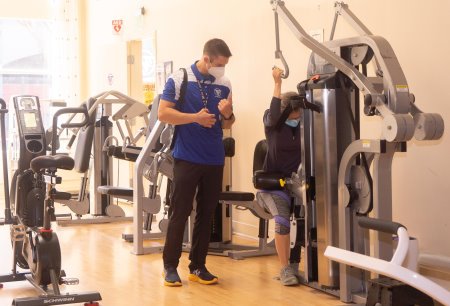
For many years I have been recommending effort based training systems which are built around brief, intense, infrequent training sessions. This style of training has proven itself to be safe, efficient, and effective. Although this style of training has been around for at least 40 years, it is still somehow not always embraced by the mainstream. Some coaches like to claim that athletes do not use this style of training. This is totally false as approximately 50% of the NFL trains using this style of training as well as numerous other professional and college programs, and even Olympic athletes. Click the link below to see some examples of teams that utilize this style of training:

Research showing the benefits of this style of training has also been around for years. Just recently some interesting studies have been released showing the positive results of various effort based training systems. Click the links below to see some current research on this topic:

As we move forward we will be posting numerous articles explaining how to design and implement effort based training programs for yourself and others. You will also find many examples of ready made workout plans. Copy a few of them and insert them into your training regimen for a nice change of pace.
Here is a video showing one example of a challenging, total-body, effort based workout:
Finally…Based on current research here is a list of seven straightforward guidelines which have been shown to work. These recommendations make sense for just about everyone.
(Parenthetical comments are clarifications.)
1) Select one or two free weight or machine exercises for each muscle group. (Exercises may be changed from time to time.)
2) Lifting duration should be consistent with good form throughout each repetition. (Not too slow or too fast)
3) Range of repetitions can be from 3 to 20, which may vary from exercise to exercise or workout to workout.
4) Strive to do as many perfect reps as possible with the weight selected, stopping only when it becomes difficult to maintain good form. (Continue each set until volitional fatigue. for optimal strength gains.)
5) Do one set of each exercise. (There is very little evidence to suggest that multiple sets of each exercise are superior to a single set for strength gains.)
6) Rest long enough between exercises to allow proper form for each exercise. (Don’t rush or rest longer than necessary.)
7) Train each muscle group 1 to 2 times a week, depending on individual recuperation and response.
Remember it’s not the quantity, but the quality of your training that boosts your results.
TAKU
TNT has over 35 years of combined fitness experience, so if you’re looking for a coach who can train you online from anywhere in the world, visit our online training page to book a consultation.
TNT wants you to maximize your strength as safely and efficiently as possible, so if you’re looking for a stand alone workout plan, check out our Blackjack training program.

















